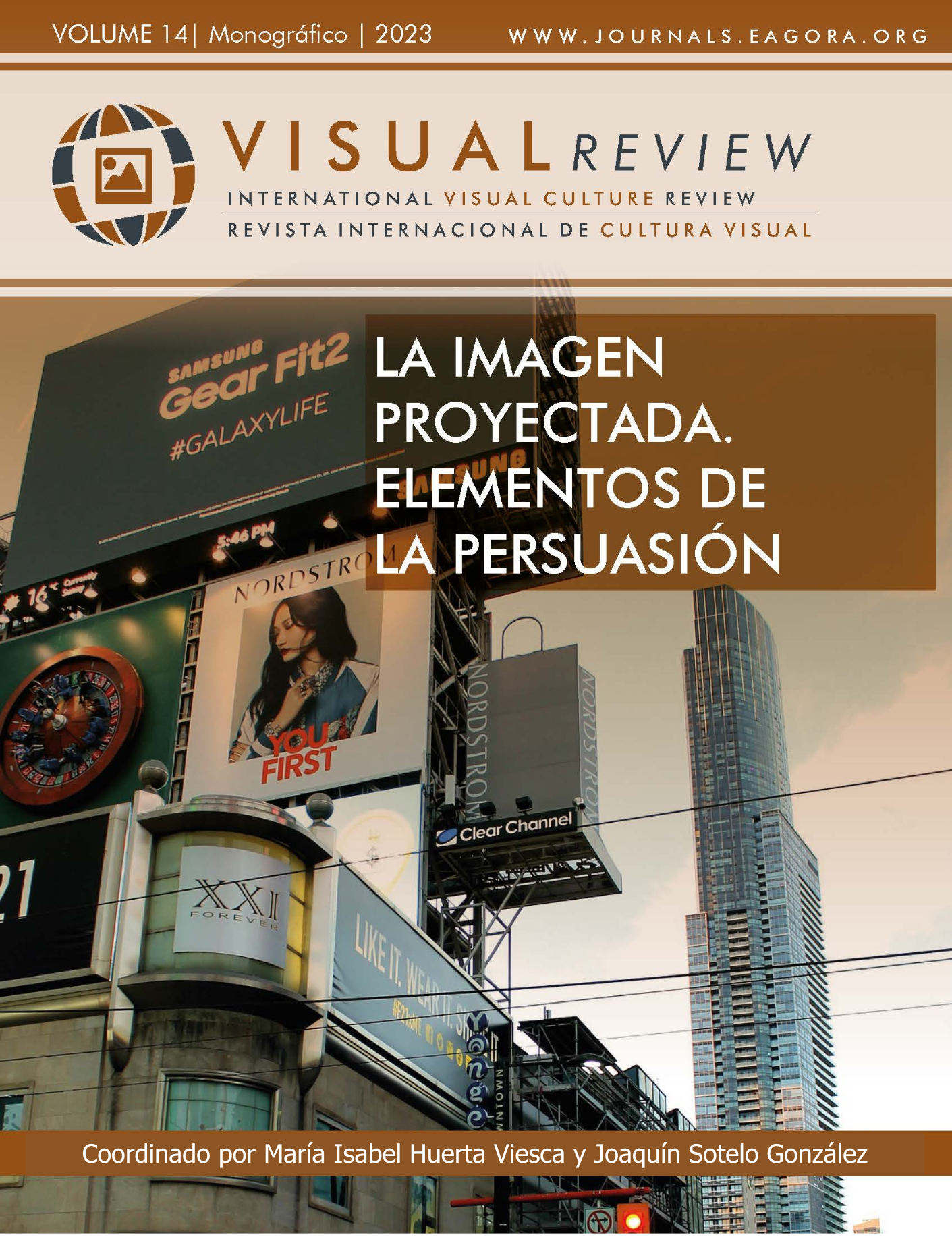Audiovisual Content as a Marketing Strategy. Branded content
Caso de Eugenio Recuenco
DOI:
https://doi.org/10.37467/revvisual.v10.4628Keywords:
Brand content, Audiovisual, Advertising, Marketing, StorytellingAbstract
Communication society is involved in a digital evolution process. The creation of contents for the Internet is part of digital culture and thus advertising has adapted its formats to this new paradigm.
This study attempts to show the relevance of Branded Content strategy. Audiovisual content is analysed through a qualitative research methodology.
Digital space transformation, connexion and integration of communication channels, and emotional connexion will be discussed. In conclusion, Branded Content is one of the most suitable strategies to convey brand identity to consumers through different formats.
Downloads
Global Statistics ℹ️
|
2746
Views
|
2625
Downloads
|
|
5371
Total
|
|
References
Baer, A. y Schnettler, B. (2009). Hacia una metodología cualitativa audiovisual.
Excellence, C. (2014). Tendencias en la generación de contenidos de marca: Branded Content.
Grau F. (2014). Planteamiento y desarrollo de una estrategia de branded content (o contenido de marca) aplicada a la empresa Oliva Nova a través de la realización de dos piezas audiovisuales breves. Universitat Politècnica de València.
Herrera, J. S. y Blanco, T. P. (2017). Nuevas tendencias en comunicación estratégica. ESIC.
López Bueno, R. (2016). Branded content: la nueva estrategia publicitaria.
Lorán Herrero, M. D. (2017). El uso del cortometraje como estrategia de branded content. Miguel Hernández Communication Journal, 8. DOI: https://doi.org/10.21134/mhcj.v0i8.159
Núñez-Gómez, P., Mañas-Viniegra, L. y Hardy, J. (2022). Branded Content, nuevas formas de comunicación de marca. Revista mediterránea de comunicación, 13(1), 125–126. https://doi.org/10.14198/MEDCOM.21499 DOI: https://doi.org/10.14198/MEDCOM.21499
Ortega Fernandez. (2022). El Branded Content en la era de la comunicación posdigital. Revista mediterránea de comunicación, 13(1), 461–463. DOI: https://doi.org/10.14198/MEDCOM.21473
Ramos-Serrano, M., Macías Muñoz, G. y Rueda-Treviño, A. (2022). Branded content y moda de lujo: análisis de los contenidos audiovisuales en YouTube (2008-2019). Revista Mediterránea de Comunicación, 13(1), 147-164. DOI: https://doi.org/10.14198/MEDCOM.20643
Rogel Del Hoyo, C. y Marcos Molano, M. (2020). El branded content como estrategia (no) publicitaria. Pensar la publicidad, 14(1), 65–75. https://doi.org/10.5209/pepu.68369 DOI: https://doi.org/10.5209/pepu.68369
Ron, Álvarez, A. y Núñez Gómez, P. (2014). Bajo la influencia del branded content: efectos de los contenidos de marca en niños y jóvenes. ESIC.
Scolari, C. (2013). Narrativas transmedia: cuando todos los medios cuentan. https://fido.palermo.edu/servicios_dyc/encuentro2007/02_auspicios_publicaciones/actas_diseno/articulos_pdf/C8-073.pdf
Villena, E. (2014). La Narrativa Transmedia en el modelo de comunicación de las empresas de moda internacionales: un estudio de caso. https://bit.ly/3OPoTfT DOI: https://doi.org/10.33115/udg_bib/cp.v3i04.22122
Downloads
Published
How to Cite
Issue
Section
License
Those authors who publish in this journal accept the following terms:
-
Authors retain copyright.
-
Authors transfer to the journal the right of first publication. The journal also owns the publishing rights.
-
All published contents are governed by an Attribution-NoDerivatives 4.0 International License.
Access the informative version and legal text of the license. By virtue of this, third parties are allowed to use what is published as long as they mention the authorship of the work and the first publication in this journal. If you transform the material, you may not distribute the modified work. -
Authors may make other independent and additional contractual arrangements for non-exclusive distribution of the version of the article published in this journal (e.g., inclusion in an institutional repository or publication in a book) as long as they clearly indicate that the work was first published in this journal.
- Authors are allowed and recommended to publish their work on the Internet (for example on institutional and personal websites), following the publication of, and referencing the journal, as this could lead to constructive exchanges and a more extensive and quick circulation of published works (see The Effect of Open Access).













